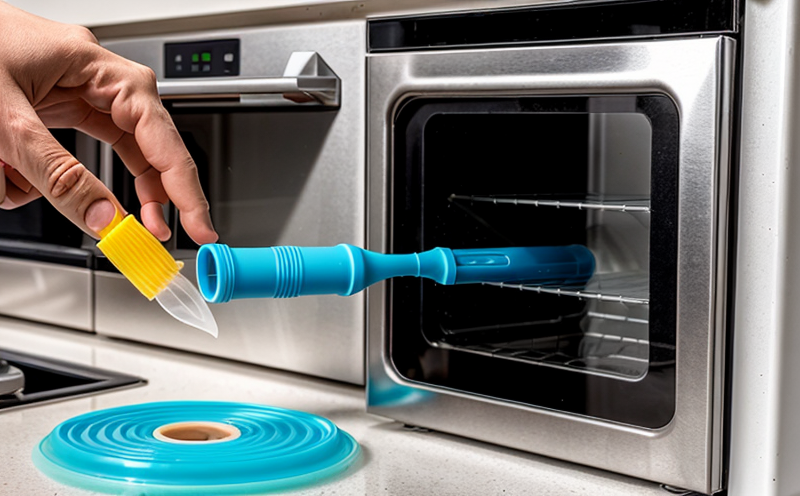ASTM D792 Household Plastics Density Testing
The ASTM D792 Household Plastics Density Testing is a critical procedure used to determine the density of homogeneous, solid plastic specimens. This test is particularly important for household plastics due to its role in ensuring product safety and compliance with international standards.
Density is a fundamental property that influences various aspects such as material selection, manufacturing processes, and end-product performance. In the context of household plastics, accurate density testing is crucial because it ensures products are safe, functional, and environmentally friendly. This test helps manufacturers verify that their materials meet industry standards and regulatory requirements.
The ASTM D792 method involves measuring the mass and volume of a specimen under controlled conditions to calculate its density. The formula used is density = \frac{mass}{volume}. This simple yet precise calculation provides insights into how materials behave in different environments, which is vital for applications like food storage containers, toys, and household appliances.
The testing process begins with the preparation of specimens. Specimens should be representative of the material being tested and free from contaminants that could affect the measurement accuracy. The choice of specimen size can vary based on the type of plastic; however, it is essential to follow ASTM guidelines for cutting and conditioning the samples. Once prepared, these specimens are weighed using an accurate balance.
The volume of the specimen is determined by immersing it in a liquid with a known density (usually water). The principle of displacement is used here: the volume of fluid displaced by the submerged object equals its own volume. This process requires precise measurements to ensure accuracy, typically achieved through modern laboratory equipment like digital balances and volumetric flasks.
The calculated density values are then compared against industry standards such as ASTM D792-18. Compliance with these standards ensures that products meet safety and performance requirements set by regulatory bodies. For instance, household plastics used in food-contact applications must have densities within specified limits to prevent contamination or migration of harmful substances into food.
Accurate density testing also plays a role in quality control during production processes. By monitoring the density of raw materials and finished goods, manufacturers can identify variations early on, allowing for corrective actions before they impact the final product. This proactive approach not only enhances product reliability but also minimizes waste and rework.
In summary, ASTM D792 Household Plastics Density Testing is an essential tool in ensuring the safety and quality of household plastics products. It provides critical data needed by manufacturers to make informed decisions about material selection, process optimization, and compliance with international standards. By adhering to this test method, companies can produce reliable, safe, and high-quality plastic goods that meet consumer expectations and regulatory requirements.
Why It Matters
The importance of ASTM D792 Household Plastics Density Testing cannot be overstated in the realm of household plastics. This test is more than just a standard procedure; it serves multiple critical purposes that impact various stakeholders:
- Safety Compliance: Ensures that household products are free from harmful substances and meet safety standards.
- Quality Assurance: Helps manufacturers maintain consistent product quality by monitoring material properties during production.
- Environmental Impact: Promotes the use of safer materials, reducing environmental hazards associated with improper disposal or recycling.
- Consumer Confidence: Builds trust among consumers who rely on safe and reliable household products.
The results from this test are also valuable for regulatory bodies, providing them with data to enforce standards that protect public health and safety. In essence, ASTM D792 is a cornerstone in the production of trusted and compliant household plastics.
Benefits
- Precision: Ensures accurate density measurements critical for product performance.
- Safety: Identifies potential hazards associated with materials used in household products.
- Regulatory Compliance: Helps companies meet international standards and avoid penalties.
- Quality Control: Facilitates the monitoring of material properties to maintain consistent product quality.
- Environmental Sustainability: Promotes the use of safer materials, reducing environmental impact.
- Consumer Trust: Enhances confidence in household products by ensuring they are safe and reliable.
The benefits extend beyond individual companies to encompass broader societal impacts. By adhering to ASTM D792, manufacturers contribute to a safer environment and more trustworthy market for consumers.
Why Choose This Test
Selecting the appropriate testing method is crucial when dealing with household plastics due to their diverse applications and safety implications. Here’s why choosing ASTM D792 is advantageous:
Accuracy: The ASTM D792 standard provides precise guidelines for density measurement, ensuring reliable results.
Consistency: By following this method consistently across all production batches, manufacturers can ensure uniform product quality.
Regulatory Acceptance: Compliance with ASTM D792 is widely accepted by regulatory bodies and international standards organizations.
Innovation Support: This test helps in the development of new materials that meet stringent safety and performance criteria.
Cost Efficiency: Early detection of issues through this testing ensures fewer rejections during quality control, reducing production costs.
Sustainability: By promoting safer materials, ASTM D792 supports sustainable practices in the plastics industry.
In conclusion, choosing ASTM D792 for household plastic density testing is a strategic decision that supports safety, compliance, and innovation. It ensures that products meet the highest standards of quality and reliability.





